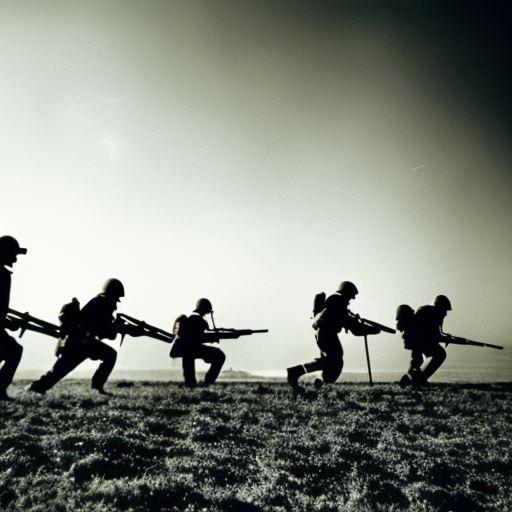Battle of Inkerman: A Fierce Clash in the Crimean War
The Battle of Inkerman took place on November 5, 1854, during the Crimean War. It was a fierce clash between British and French forces against the Russian Empire. The battle occurred near the town of Inkerman in the Crimean Peninsula, which was strategically important due to its proximity to the Russian naval base at Sevastopol.
The Context: The Crimean War
The Crimean War began in 1853 when the Russian Empire, under the leadership of Tsar Nicholas I, invaded the Ottoman Empire. The British and French, concerned about Russian expansionism and the security of their interests in the region, decided to intervene on behalf of the Ottomans. The war quickly escalated, with both sides suffering heavy casualties.
The Battle Begins: Russian Surprise Attack
On the morning of November 5, 1854, the Russian forces launched a surprise attack on the British and French positions near Inkerman. The foggy conditions provided cover for the Russians, who hoped to catch their opponents off guard. However, the British and French soldiers managed to hold their ground and repel the initial assault.
The Battle Intensifies: Fierce Fighting
As the battle progressed, the fighting became increasingly intense. The British and French forces found themselves outnumbered by the Russians, who launched wave after wave of attacks. The battle turned into a brutal close-quarters fight, with soldiers engaging in hand-to-hand combat.
The Thin Red Line
One of the most famous episodes of the Battle of Inkerman was the stand of the British 93rd Highlanders. Outnumbered and under heavy fire, the Highlanders formed a line and held their position against the Russian onslaught. This display of bravery earned them the nickname “The Thin Red Line.” Their resistance played a crucial role in preventing a Russian breakthrough.
The French Counterattack
While the British held their ground, the French launched a counterattack against the Russian forces. Led by General Pierre Bosquet, the French soldiers managed to push back the Russians and relieve some of the pressure on the British. The combined efforts of the British and French forces eventually forced the Russians to retreat.
The Aftermath: Costly Victory
The Battle of Inkerman was a costly victory for the British and French. Both sides suffered heavy casualties, with estimates ranging from 10,000 to 12,000 dead and wounded. The Russian losses were even higher, with estimates ranging from 12,000 to 15,000. The battle highlighted the bravery and resilience of the British and French soldiers, but it also underscored the high human cost of the war.
Legacy and Significance
The Battle of Inkerman had several significant consequences. First, it boosted the morale of the British and French forces, who had been facing setbacks and hardships throughout the war. The battle demonstrated their ability to withstand a determined enemy and gave them hope for future victories.
Second, the Battle of Inkerman played a crucial role in the overall outcome of the Crimean War. The Russian defeat at Inkerman weakened their position and contributed to the eventual fall of Sevastopol in 1855. The war ended in 1856 with the signing of the Treaty of Paris, which recognized the Ottoman Empire’s territorial integrity and limited Russian influence in the region.
In conclusion, the Battle of Inkerman was a fierce clash between British and French forces against the Russian Empire during the Crimean War. It was characterized by intense fighting, including the famous stand of the British 93rd Highlanders. The battle resulted in heavy casualties on both sides but boosted the morale of the British and French forces. Ultimately, the Russian defeat at Inkerman contributed to their eventual loss in the Crimean War.












